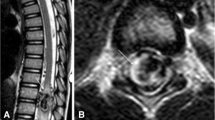Abstract
Hereditary hemorrhagic telangiectasia (HHT) is inherited as an autosomal dominant trait with varying penetrance and expressivity. Some of the most devastating consequences of this disease result from cerebral vascular malformations that manifest themselves in either arteriovenous fistulae (AVF), small nidus-type arteriovenous malformations (AVM) or micro- AVMs with a nidus less than 1 cm in size. HHT displays an age-related penetrance of clinical manifestations: fistulae become symptomatic in early childhood, whereas AVMs are typically encountered in older children and young adults. Micro-AVMs in the HHT population did not bleed and were asymptomatic incidental findings in affected patients. Since members of the same family can present with completely different phenotypes of this disease, there seem to be no relationship between the type of mutation and the phenotype of the disease. There seem to be a continuum of vascular abnormalities (from large fistulous areas to small AVMs and micro-AVMs) associated with HHT, most likely being determined by the timing of the revealing event in relation to the maturity of the vessel. Presumably, the trigger of the quiescent genetical abnormality transforms a “dormant” disease into a morphologically and therefore clinically detectable one by impairing a specific vessel segment at a specific (more or less vulnerable) period of time. The nature of this triggering event is, however, yet unclear. Embolization employing superselective glue injection results in a high occlusion rate, esp. in AV fistulae. Since the natural history of neurovascular manifestations of HHT especially in children is associated with high morbidity and mortality, therapeutic intervention is mandatory. In most instances a morphological target can be identified; therefore, even partial and staged treatment can be performed. The endovascular approach employing glue as the embolizing agent represents a safe and efficient way to control the neurovascular phenotypes of HHT.
Zusammenfassung
Die hereditäre hämorrhagische Teleangiektasie (HHT) ist eine autosomal dominant vererbte Erkrankung mit variabler Penetranz. Einige der klinisch bedeutsamsten Konsequenzen dieser Erkrankung erwachsen aus den neurovaskulären Manifestationen, bei denen man verschiedene Phänotypen nachweisen kann. Das Ziel dieser Arbeit ist es, die unterschiedlichen neurovaskulären Manifestationen der HHT zu typisieren und die therapeutischen Behandlungsoptionen darzulegen. Neurovaskuläre Manifestationen der HHT sind die spinalen arteriovenösen Fisteln (AVF), die zerebralen AVF, die „klassischen“ nidusförmigen glomerulären arteriovenösen Malformationen (AVMs) und die Mikro-AVMs (Nidus unter 1cm Größe, ohne verfrühte venöse Drainage). Während die Fisteln (sowohl spinal als auch zerebral) vor allem in der pädiatrischen Population symptomatisch wurden, wurden die glomerulären AVMs und Mikro-AVMs erst im späten Jugendalter und frühen Erwachsenenalter diagnostiziert. Die Phänotypologie der HHT ist variabel und scheint nicht mit der spezifischen Mutation zusammenzuhängen. Es wird vermutet, dass ein bislang unbekannter Auslöser bei vorliegender genetischer Disposition diese Erkrankung klinisch manifest werden lässt. Da der natürliche Verlauf neurovaskulärer Manifestationen der HHT im Kindesalter mit einer hohen Morbidität und Mortalität assoziiert ist, ist eine therapeutische Intervention notwendig. Dabei ist, insbesondere für die Fisteln, die superselektive Histoacrylembolisation die therapeutische Option der Wahl.
Similar content being viewed by others
Author information
Authors and Affiliations
Corresponding author
Rights and permissions
About this article
Cite this article
Krings, ., Ozanne, A., Chng, S.M. et al. Hereditary Hemorrhagic Telangiectasia. Clin Neuroradiol 16, 76–90 (2006). https://doi.org/10.1007/s00062-006-6009-x
Received:
Accepted:
Issue Date:
DOI: https://doi.org/10.1007/s00062-006-6009-x
Key Words:
- Hereditary hemorrhagic telangiectasia
- Rendu-Osler-Weber disease
- Cerebral arteriovenous malformation
- Cerebral arteriovenous fistula
- Glue embolization




